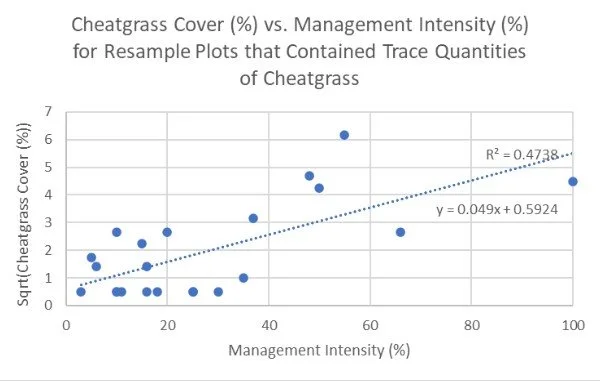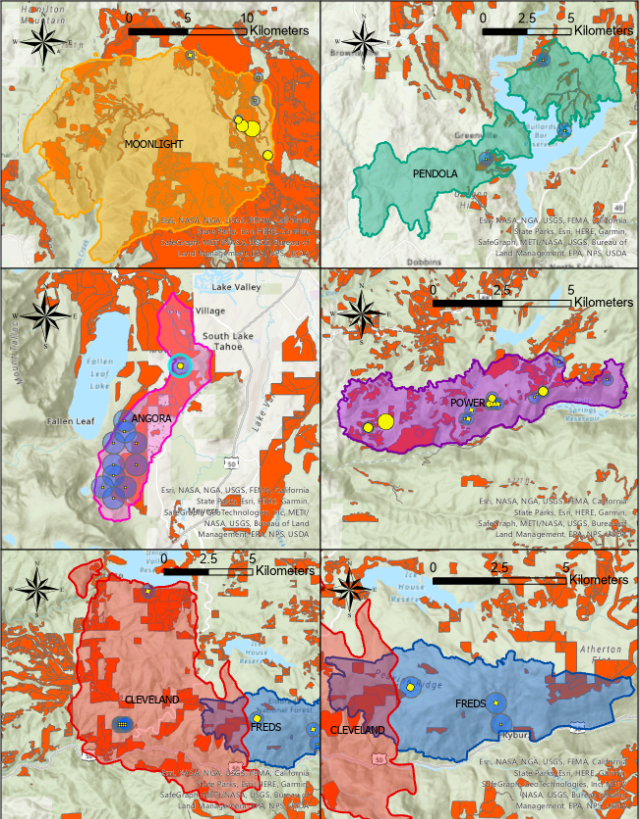Mechanical land management as a driver for establishment of invasive grasses in post-wildfire landscapes
Kara K. Sanghera, Claire Tortorelli, Andrew M. Latimer
Affiliation: University of California, Davis
Context: Climate change and past fire-suppression policies have significantly altered the natural fire regime of dry mixed-conifer forests in the Sierra Nevada, resulting in an increasing number of high-mortality wildfires. Recent studies have observed that invasive grasses are more heavily invading previously-forested landscapes after severe fire than they have historically, disrupting the natural tree regeneration process. Human management of forested landscapes may act as a vector for annual grass dispersal and contribute to their colonization of new areas affected by wildfire. This study focuses particularly on cheatgrass (Bromus tectorum), a prevalent non-native grass that has seen a noticeable increase in establishment and persistence in Western North American post-fire landscapes.
Objective: To examine if anthropogenic landscape change, through mechanical land management, influence the patterns of invasive grass establishment, spread, and persistence in post-fire forested landscapes.
Summary of Results: There is some evidence to suggest that mechanical management may promote annual grass persistence, as all sample plots that contained invasive annual grasses were managed to some degree. However, due to significant variation in the data, it is difficult to draw meaningful conclusions.
Scatterplot with trendline of how cheatgrass cover changes over the percentage of management that falls within the 400-meter buffer for the sampling points that contain trace amounts (0.25%) or more of cheatgrass. Cheatgrass cover is square-root transformed.
Panel map of the six sample fires. Yellow dots denote sampling points, and size is proportional to the percent cover of annual grass in the sample area. The orange polygons represent management activity. A 400-meter buffer surrounds each sample point, and the proportion of management that intersects with this buffer was calculated.
Management data sourced from the FACTS database

